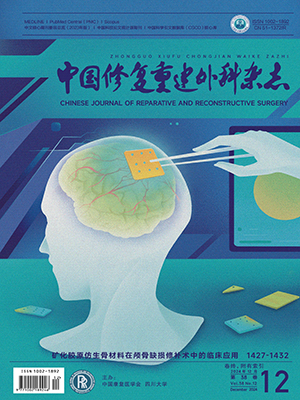Objective To investigate the clinical application and early results of combined epiphyseal preservation and autograft bone transfer for limb salvage in children with osteosarcoma. Methods Between March 2010 and March 2011, 3 children with osteosarcoma were treated with epiphyseal preservation and autograft bone transfer. There were 1 boy and 2 girls with the age of 10-14 years. The disease duration was 2 weeks to 3 months. The tumors were rated as type II according to San-Julian radiological classification and as type IIB according to Enneking surgical classification. The locations were the distal femur in 1 case and the proximal tibia in 2 cases. The surgical technique included preoperative neoadjuvant chemotherapy, excision of part of the epiphysis, preservation of subarticular epiphysis, external fixation with Ilizarov apparatus and transport osteogenesis treatment. Safe excision border was confirmed by histological examination. Postoperative observation included the wound healing, local recurrence or distant metastasis, length, speed, alignment, and regeneration of transplanted bone, the length and function of the affected limb. Results The postoperative histological examination proved the safe surgical margin in all 3 patients. The incision healing by first intention was obtained at distal femur in 1 case and by second intention at proximal tibia in 2 cases at 4 weeks after changes of dressing. Three patients were followed up 12, 18, and 24 months, respectively. There was no local recurrence or distant metastasis during follow-up. Two cases had pin-tract infection at 10 months after external fixation and were cured after changes of dressing and antibiotics administration. The length of transplanted osteogenisis was 18.0, 9.5, and 16.0 cm, respectively. The speed of lengthening was 2.57, 2.07, and 1.20 cm/month, respectively. One patient had alignment deviation during lengthening, which was adjusted under anaesthesia. Bony healing was achieved at 8 months after lengthening end in 2 cases and external fixation was removed; 1 patient had poor bone growth and was given retraction for promoting bone growth. At last follow-up, the length of the affected limbs was 1.0-1.5 cm shorter than that of normal limbs, but no abnormalities was observed at donor sites. The affected knee flexion reached 90° and 120° in 2 patients and poor knee function was observed in 1 patient for external fixation. Conclusion The combined epiphyseal preservation and transport osteogenesis technique can be used for bone defect repair by lengthening the residual bone. It is a promising limb salvage treatment for children with osteosarcoma.
Citation: FANG Bin,YI Chunzhi,ZHANG Hua,ZHANG Qingwen,LI Yong,WEI Qiushi,HE Wei,ZENG Zuoqing.. COMBINED EPIPHYSEAL PRESERVATION AND AUTOGRAFT BONE TRANSFER IN TREATMENT OF CHILDREN OSTEOSARCOMA. Chinese Journal of Reparative and Reconstructive Surgery, 2013, 27(1): 45-49. doi: Copy
Copyright © the editorial department of Chinese Journal of Reparative and Reconstructive Surgery of West China Medical Publisher. All rights reserved




